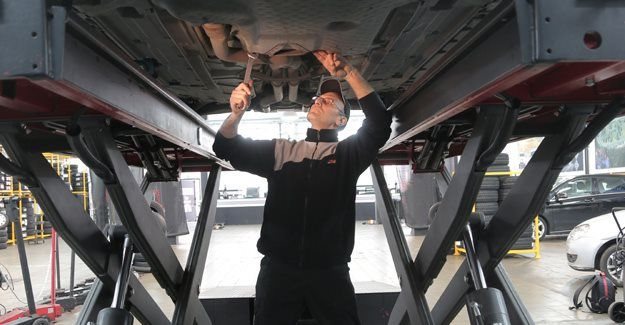
Top stories


EducationFrom adversity to opportunity: African education’s revival strategies
Sanjeev Mansotra 1 day



Marketing & MediaThe Odd Number named Financial Mail AdFocus Mid-Sized Agency of the Year
The Odd Number 1 day

More news












“Neglecting to maintain your car can lead to serious issues and even an accident and injury if you choose to ignore the warning signs about things which need attention,” warns Ranft.
The six most critical components to check regularly, according to Miwa:
Rubber compounds in a tyre deteriorate over time, regardless of the condition of the tread, making an old tyre just as hazardous as a tyre with worn tread. Ranft explains tyres produced after 2000 have a four-digit Dot code instead of a three-digit code. The first two digits indicate the production week and the second two are the year.
“In South Africa, exposure to sunlight, heat and especially coastal conditions definitely contribute to the ageing of tyres. The age warning also applies to spare tyres or 'new' tyres. Just because a tyre looks new doesn’t mean it wasn’t manufactured years ago and has been left in a shop to age.
“Always be sure of exactly how old the tyre is before buying it and ensure an accredited workshop or mechanic is advising you on tyres.”
If any of the components of the braking system are faulty, it can lead to mechanical failure but the most common culprits of poor braking performance are brake pads. Over time, the pads will wear down and can lead to more costly issues, like a damaged rotor.
“The entire hydraulic braking system is dependent on a steady flow of brake fluid,” says Ranft. “Check the brake fluid during regular oil changes and expect to change it every four to five years.
“Like oil, brake fluid loses its effectiveness over time but when to change it varies by type of car, driving conditions and the manufacturer’s recommendations. Signs you should get to an accredited workshop to have your brake fluid check immediately is if the fluid has a burnt odour, is not transparent or is a lower level than it should be.
“It is not advisable to swap and change brake fluids, always rather stick with the manufacturer’s prescription.”
It is easy to check the lights on your car yourself with the help of someone checking from the outside while you turn the various lights and indicators on and off.
“Drivers are often oblivious to the fact one or more of their car lights are not working, which can be dangerous to you and other road users,” warns Ranft. “Be sure to regularly check the driving lights, brake lights, indicators, reverse lights and the light above the number plate.
“An accredited workshop will more than likely replace faulty bulbs while you wait. Remain a responsible road user by using your lights correctly at all times too – indicate when necessary and turn your lights on when driving after dusk - even in daylight on a long trip - and especially in adverse weather.”
Did you know that up to 70% of the energy burnt from petrol in a car engine is converted to heat? The cooling system helps reduce the heat the engine produces to allow it to run at an optimal temperature and to allow the car to heat up quickly when it is started, as engine components tend to wear quickly when running at temperatures which are too cold.
Ranft explains the cooling system. “It is made up of a radiator with a fan, a water pump, thermostat and sensors and some fluids which all work together to maintain the engine’s temperature. Running an overheated car can have serious consequences on the cooling system.
“To keep this system running smoothly, replace coolant at the intervals recommended by the manufacturer and only use products recommended by the manufacturer. It is important to flush the cooling system when replacing the old coolant and to ensure the correct mixture ratios are maintained when topping up.”
Cars use electricity to start up and the charging system is what powers the electrical components. The system consists of the alternator, voltage regulator and the battery.
Ranft advises these tips for caring for your car’s charging system:
Wiper blades
Windscreen wipers are ironically one of the hardest working yet least durable parts of a car.
“Manufacturers generally recommend changing wipers every six months to once a year,” says Ranft.
“There's no hard-and-fast rule but the first sign of deterioration is when they leave streaks on your windshield, stutter their way across the glass or only clean one side of the windshield.”